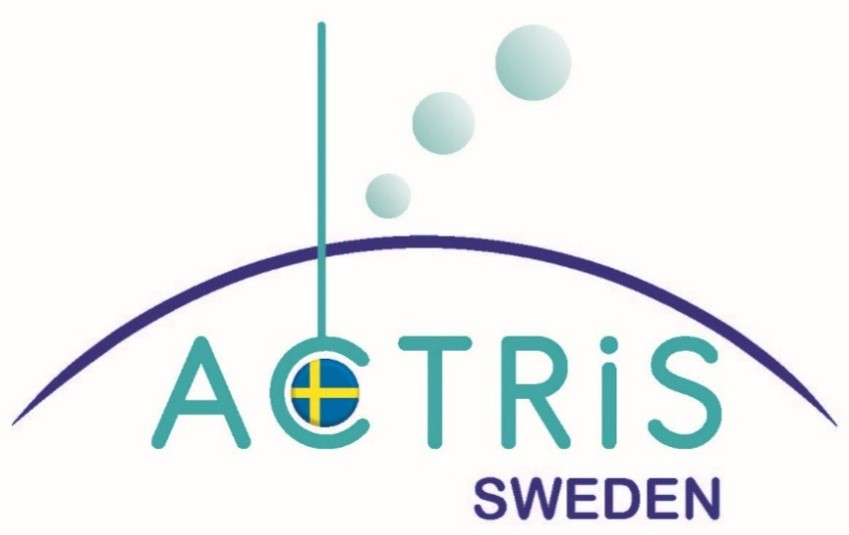ACTRIS Sweden provides access support to the Hyltemossa site for both Swedish and non-Swedish researchers or research teams. Transnational access (TNA) is made available through the EU H2020 project ATMO-ACCESS TNA programme. Commercial users are also eligible for access.
Location: 56° 5' 52" N, 13°25' 8" E, 115 m asl (southern Sweden, 1 hour drive north from Lund)
Nearest small town: Perstorp; Municipality: Klippan; Province: Skåne; Country: Sweden.
The site was established in 2014 (ICOS), ACTRIS activities started 2017.
Hyltemossa is an ICOS combined atmosphere and ecosystem station, with ICOS activities operated by Lund University.
ACTRIS activities at Hyltemossa is operated by Lund University.
Web site: http://www.icos-sweden.se/station_hyltemossa.html
Description of the infrastructure
In 2017, the groups involved in ACTRIS at Lund University moved all aerosol research activities from the previous ACTRIS site Vavihill to the ICOS Sweden site at Hyltemossa in southern Sweden. The co-location of ICOS and ACTRIS observational capabilities at Hyltemossa offers a comprehensive research infrastructure that is essential for studying the multiple and tightly interlinked processes that control the land ecosystem – atmosphere – climate system.
The site is unique in the sense that it is situated in a highly productive and well-managed Norway spruce forest (Picea abies), representing typical southern Sweden forest management conditions aiming mainly to optimize commercial yields. The pollution levels at Hyltemossa are typically fairly low but vary considerably depending on air mass origin and meteorological conditions.
Hyltemossa is a temperate forest site located a few kilometers south of Perstorp, in southern Sweden with moderate pollution levels. The station is 19 km ENE of the previous ACTRIS location at Vavihill (in operation 2000–2018). ICOS Sweden and Lund University have provided the main funding for construction of the existing ICOS/ACTRIS infrastructure. The site around the ICOS (150 m) and ACTRIS (30 m) towers is dominated by Norway spruce (Picea abies) with a small fraction of birch trees (Betula sp.) and single occurrence of Scots pine (Pinus sylvestris). The trees are presently ca 39 years old and 20 m tall. Understory vegetation is sparse with a forest floor mainly covered by feather moss. There is separate housing for equipment (2 ACTRIS laboratories: 15+25 m2) and personnel with possibilities for overnight stays (10 beds, full kitchen, toilet/shower) and meetings (room up to 20 persons). The station is supplied with mains power and internet connection (radiolink). ACTRIS Station PI Adam Kristensson and two research engineers (corresponding to 150% FTE) manage the ACTRIS activities at the site.
Services offered
A 150 m high tower was erected in March 2014 at the Hyltemossa forest site, and installation of ICOS instrumentation and sensors are fully operational. ICOS measurements at the Hyltemossa tall tower include profiles of CO2, CH4, CO and H2O, radiation balance, micrometeorological parameters, eddy covariance fluxes of CO2, H2O, heat and momentum and various soil properties.
For ACTRIS, a 30 m high tower was erected in August 2016 at the Hyltemossa site, in close vicinity to the laboratory building. This tower supports the aerosol inlet that samples air from well above the forest canopy.
A new ACTRIS 25 m2 laboratory building was constructed in an open field 600 m north of the ICOS tower forest site. Most of the ACTRIS instrumentation will be moved there in 2022.
The aerosol instrumentation for continuous measurements are: aerosol size distributions (MPSS, APS), absorption (7-wl Aethalometer) and scattering (3-wl forward/backscatter nephelometer), cloud activation (CCNC), aerosol chemical composition (Aerodyne ToF-ACSM) and OC/EC. Gas measurements include NO/NO2, SO2 and O3. Campaign-wise measurements of aerosol chemical composition (Aerodyne HR-ToF-AMS with a Soot Photometer), a DMT SP2, VOC (PTR-ToF-MS), Aerosol particle density (DMA-APM), and hygroscopicity (H-TDMA) are performed.
